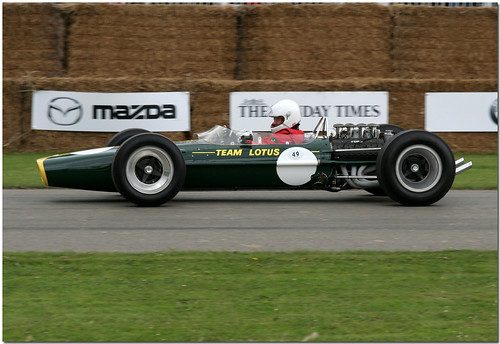- 8,062
- GTP_Royalton
I read all the replies and came to the following conclusion. Many will disagree.
Openwheel racing should have a major overhaul. How openwheel racing cars look like needs should be changed to allow a roof with escape doors, like a lemans prototype. This could be accomplished over a period of time (5-10 years) to ease the cost issue. No racing series uses the same cars for more then a few years so eventually all openwheel cars can move be built from scratch to accommodate.
But notice I said "should".
Theres a noticeable crowd out there that believes because racing is inherently dangerous theres no point in worrying about the details of safety. I have a feeling if these people had been left in charge of safety in racing over the years drivers would still wear leather helmets and mounds of dirt would separate the cars from the fans.
It seems this crowd either still has the "I'm invincible" mentality or the "It will never happen (to me)" mentality. They probably don't even see the need to wear a seatbelt, beause hey, what are the odds of anything ever happening, and how can you be sure the seatbelt would help me? It might trap me in the car!!!
Since open cars are so safe compared to tin tops, let me be the first to suggest NASCAR move to convertibles with double rolloverbars.
Openwheel racing should have a major overhaul. How openwheel racing cars look like needs should be changed to allow a roof with escape doors, like a lemans prototype. This could be accomplished over a period of time (5-10 years) to ease the cost issue. No racing series uses the same cars for more then a few years so eventually all openwheel cars can move be built from scratch to accommodate.
But notice I said "should".
Theres a noticeable crowd out there that believes because racing is inherently dangerous theres no point in worrying about the details of safety. I have a feeling if these people had been left in charge of safety in racing over the years drivers would still wear leather helmets and mounds of dirt would separate the cars from the fans.
It seems this crowd either still has the "I'm invincible" mentality or the "It will never happen (to me)" mentality. They probably don't even see the need to wear a seatbelt, beause hey, what are the odds of anything ever happening, and how can you be sure the seatbelt would help me? It might trap me in the car!!!
Closed canopies cause more problems than they solve.
Since open cars are so safe compared to tin tops, let me be the first to suggest NASCAR move to convertibles with double rolloverbars.



